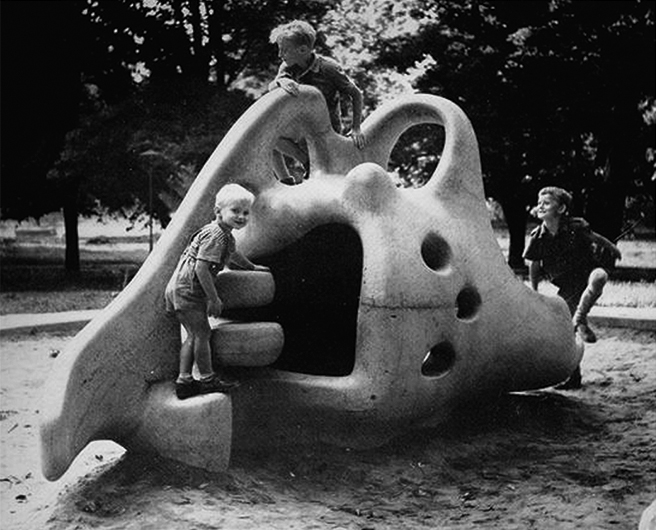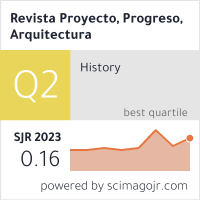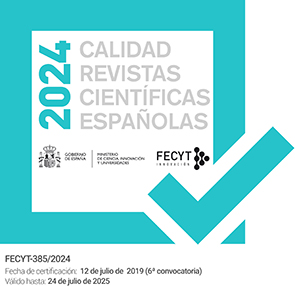RALPH ERSKINE, ARQUITECTURA PEDAGÓGICA. TRES CONJUNCIONES EN LA OBRA DEL ARQUITECTO ANGLO-SUECO QUE INVOLUCRAN A LA INFANCIA EN EL PROCESO DE PROYECTO
DOI:
https://doi.org/10.12795/ppa2023.i39.06Palavras-chave:
arquitectura democrática, escuela activa, participación, infancia, Escuela Gyttorp, Byker, Egon Möller-NielsenResumo
Ralph Erskine pertenece a ese grupo de arquitectos que entiende la generación del proyecto arquitectónico como un proceso pedagógico y político que ayuda a modelar la sociedad al mismo tiempo que configura un espacio. Por ello, sus propuestas, además de poner cuidado en la función y en la planificación, presentan una gran disponibilidad a atender nuevas ideas, y a incorporar el contexto incluyendo la participación del usuario desde diferentes perspectivas como proceso necesario para alcanzar una arquitectura válida y consensuada. Entre sus obras se seleccionan tres que ofrecen un papel protagonista a la infancia en tres escalas de actuación diversas: espacio público, espacio específico y espacio colectivo y, a su vez, mediante tres modos de participación o roles diferentes: a través, para y con la infancia. Esta metodología cruzada nos ayuda a analizar la aportación que la mirada o la acción infantil ha ofrecido tanto a la planificación, como a las estrategias de proyecto o al modo de hacer arquitectura desarrolladas por el equipo de trabajo del arquitecto anglo sueco: el monumento memorial “El prisionero político desconocido” de 1953, proyectado junto a E.M. Nielsen como un espacio público que revierte el concepto de monumento a través de la acción infantil; la Escuela Gyttorp de 1961, donde profundiza sobre lo que un espacio de aprendizaje para la infancia deber ser y puede aportar a una comunidad, y el proceso participativo llevado a cabo en la remodelación del Barrio de Byker, donde contar con la aportación infantil matizó algunas decisiones, principalmente en lo relativo al espacio colectivo.
Downloads
Referências
BERGSON, Henri. La evolución creadora. Buenos Aires: Cactus, 2008. ISBN 978-987-24075-0-6.
BERNSTEIN, Robin. Racial Innocent. Performing American Childhood from Slavery to Civil Rights. New York: NYU Press, 2011. ISBN 978-0-8147-8709-0.
CAILLOIS, Roger. Los juegos y los hombres. La máscara y el vértigo. México: Fondo De Cultura Económica, 1986. ISBN 9789681624811.
CAMPOS URIBE, Alejandro et al. Multiculturalism in Post-War architecture: Aldo van Eyck and the Otterlo Circles [en línea]. ACE: Architecture, City and Environment. Barcelona: Universitat Politècnica de Catalunya, 2020, vol. 14, n.º 42. p. 5 [consulta: 25-09-2023]. ISSN 1886-4805. DOI: http://dx.doi.org/10.5821/ace.14.42.7033.
CASQUEIRO, Fernando. Canon de centros escolares del siglo xx. Madrid: Amirea Libros, 2014. ISBN 9788494197741.
COLLYMORE, Peter. Ralph Erskine. Barcelona: Gustavo Gili,1983. ISBN 9788425211515.
CROWE, Ben. Retracing Byker with Vernon Gracie [documental]. London: ERA Films Ltd. 2022. Disponible en: https://www.youtube.com/watch?v=V6B3Z51zp60.
DRUKER, Elina. Play Sculptures and Picturebooks Utopian Visions of Modern Existence [en línea]. En: Journal of Children’s Literature Research. Children’s Literature Assembly, 2019, vol. 42, p. 12 [consulta: 25-09-2023]. ISSN-e 2000-4389. DOI: https://doi.org/10.14811/clr.v42i0.433.
EGELIUS, Mats. Ralph Erskine, architect. Estocolmo: Byggförlaget, 1990. ISBN 9179880460.
ERSKINE, Ralph. Ralph Erskine (1914-2005). Conferencia organizada por la Dirección General de Arquitectura y Vivienda: Convento de santa María de las Cuevas, Sevilla, 1988.
EYCK, Aldo van. Writtings. Vol. 1. The Child, the City and the Artist. London: Sun 2008.
FELIZ RICOY, Sálvora. Infraestructuras residenciales XL. Evolución de las producciones masivas de vivienda en la gran escala [en línea]. Dirección: Carmen Espegel Alonso y Leandro Medrano. Tesis doctoral. Universidad Politécnica de Madrid, 2022 [consulta: 25-09-2023]. Disponible en: https://oa.upm.es/69901/.
GALLI, Darío. Ruoli in Gioco il progettista riflessivo, il bambino come committente e la partecipazione [en línea]. Dirección: Luca Guerrini. Tesis doctoral. Milán: Politecnico di Milano, Facoltà del, Milán, Italia, 2011 [consulta: 25-09-2023]. Disponible en: https://www.politesi.polimi.it/retrieve/a81cb059-8c36-616b-e053-1605fe0a889a/2011_03_Galli.pdf.
GEDDES, Patrick. Ciudades en evolución. Buenos Aires: Infinito, 1960.
HUIZINGA, Johan. Homo Ludens. Madrid: Alianza Editorial, 2012. ISBN 978-84-206-0853-2.
JACOBS, Jean. The Death and Life of Great American Cities. New York: Random House Inc. Edit.,1961.
KAHN, Louis. Forma y diseño. Buenos Aires: Nueva Visión. 2003.
LEFEBVRE, Henry. El derecho a la ciudad, Barcelona: Península, 1967.
LINNÉ, Carl von. Systema Naturae. Madrid: Nabu Press, 2011.
MAYORAL CAMPA, Esther. Pensamientos compartidos. Aldo van Eyck, el grupo Cobra y el arte [en línea]. Proyecto, Progreso, Arquitectura. Arquitecturas en común. Sevilla: Editorial Universidad de Sevilla, 2014, n.º 11, pp. 64-75 [consulta: 25-09-2023]. ISSN-e 2173-1616. DOI: https://doi.org/10.12795/ppa.2014.i11.05.
MAYORAL CAMPA, Esther; POZO BERNAL, Melina. Del aula a la ciudad. Arquetipos urbanos en las escuelas primarias de Herman Hertzberger [en línea]. Proyecto, Progreso, Arquitectura. Arquitectura escolar y educación. Sevilla: Editorial Universidad de Sevilla, 2017, n.º 17, pp. 100-115 [consulta: 25-09-2023]. ISSN-e 2173-1616. DOI: https://doi.org/10.12795/ppa2017.i17.07.
MCGOWAN, Jérémie Michael. Ralph Erskine, (Skiing) Architect. Semantic Scholar, 2008. Disponible en: https://api.semanticscholar.org/CorpusID:129711796.
MAYORAL-CAMPA, Esther, POZO BERNAL, Melina,MIRÓ MIRÓ, Cristóbal, Paisajes infantiles. La infancia como constructora de un imaginario urbano. A: “ACE: Architecture, City and Environment”, Octubre 2021, vol. 16, núm. 47, 9945. Disponible en: https://doi.org/10.5821/ace.16.47.9945
PARRA-MARTÍNEZ, José; STUTZIN-DONOSO, Nicolás; LÓPEZ-CARREÑO, Juan Manuel. Playgrounds y espacio común. A propósito del juego en la ciudad suspendida [en línea]. Proyecto, Progreso, Arquitectura. Emergencias del espacio común. Sevilla: Editorial Universidad de Sevilla, 2021, n.º 25, pp. 50-67 [consulta: 25-09-2023]. ISSN 2173-1616. DOI: https://doi.org/10.12795/ppa.2021.i25.03.
PIAGET, Jean. La psicología de la inteligencia. Buenos Aires: Editorial Psique, 1972.
POZO BERNAL, Melina. Arquitectura y Pedagogía: la disolución del aula: mapa de espacios arquitectónicos para un territorio pedagógico [en línea]. Barcelona: GIRAS. Universitat Politècnica de Catalunya, 2014 [consulta: 25-09-2023]. Disponible en: http://hdl.handle.net/2117/114942.
RAMOS-CARRANZA, Amadeo. Alfred Roth: The New School [en línea]. Proyecto, Progreso, Arquitectura. Arquitectura escolar y educación. Sevilla: Editorial Universidad de Sevilla, 2017, n.º 17, pp. 148-149. ISSN 2173-1616. DOI: https://doi.org/10.12795/ppa.2017.i17.11.
RAY, Stefano. Ralph Erskine: architetture di bricolage e partecipazione. Bari, Italia: Dédalo Libri, 1978.
SÁNCHEZ LLORENS, Mara. ¡Todos a Bordo… Nos vemos en el Ártico! La evolución democrática de la arquitectura eco-lógica de Ralph Erskine [en línea]. En: Revista Europea de Investigación en Arquitectura (REIA). Madrid: Universidad Europea de Madrid, 2015, n.º 4, pp. 137-157 [consulta: 25-09-2023]. ISSN-e 2340-9851. Disponible en: https://dialnet.unirioja.es/servlet/articulo?codigo=5647628&orden=0&info=link.
SANCHEZ LLORENS, Mara. Lección inaugural 2012-2013. Arquitectura y Sociedad. Universidad Pontificia de Salamanca. Edición Fundación Pablo VI. Salamanca, 2012.
SENTIERI OMARREMENTERÍA, Carla, VERDEJO ÁLVAREZ, Elena. Las escuelas de Hans Scharoun versus la escuela finlandesa en Saunalahti [en línea]. En: Proyecto, Progreso, Arquitectura. Arquitectura escolar y educación. Sevilla: Editorial Universidad de Sevilla, 2017, n.º 17, pp. 70-83 [consulta: 25-09-2023]. ISSN-e 2173-1616. DOI: https://doi.org/10.12795/ppa2017.i17.05.
SVENNINGSEN KAJITA, Heidi. Urgent Minor Matters: Re-Activating Archival Documents for Social Housing Futures [en línea]. Architecture and Culture. Londres: Routledge, 2022 [consulta: 25-09-2023]. DOI: https://doi.org/10.1080/20507828.2022.2093603.
SWENARTON, Mark; AVERMAETE, Tom; HEUVEL, Dirk van den. Architecture and the Welfare State. London: Taylor and Francis, 2014. ISBN 9780415725408.
WARD, C. Adventure Playgrounds. En: Anarchy. A journal of Anarchist Ideas.. A Parable of Anarchy. London: Freedom Press, 1961, n.º 7. Disponible en: https://archive.org/details/AnarchyNo.7/page/n17/mode/2up.

Publicado
Como Citar
Edição
Seção
Licença
Las ediciones impresa y electrónica de esta Revista son editadas por el Secretariado de Publicaciones de la Universidad de Sevilla, siendo necesario citar la procedencia en cualquier reproducción parcial o total.
Salvo indicación contraria, todos los contenidos de la edición electrónica se distribuyen bajo una licencia de uso y distribución “Creative Commons Atribución-NoComercial-SinDerivar 4.0 Internacional” ![]() . Puede consultar desde aquí la versión informativa y el texto legal de la licencia. Esta circunstancia ha de hacerse constar expresamente de esta forma cuando sea necesario.
. Puede consultar desde aquí la versión informativa y el texto legal de la licencia. Esta circunstancia ha de hacerse constar expresamente de esta forma cuando sea necesario.
Los autores/as que publiquen en esta revista aceptan las siguientes condiciones:
- Los autores/as conservan los derechos de autor y ceden a la revista el derecho de la primera publicación, con el trabajo registrado con la licencia de atribución de Creative Commons, que permite a terceros utilizar lo publicado siempre que mencionen la autoría del trabajo y a la primera publicación en esta revista.
- Los autores/as pueden realizar otros acuerdos contractuales independientes y adicionales para la distribución no exclusiva de la versión del artículo publicado en esta revista (p. ej., incluirlo en un repositorio institucional o publicarlo en un libro) siempre que indiquen claramente que el trabajo se publicó por primera vez en esta revista.
- Se permite y recomienda a los autores/as a publicar su trabajo en Internet (por ejemplo en páginas institucionales o personales) antes y durante el proceso de revisión y publicación, ya que puede conducir a intercambios productivos y a una mayor y más rápida difusión del trabajo publicado (vea The Effect of Open Access).








